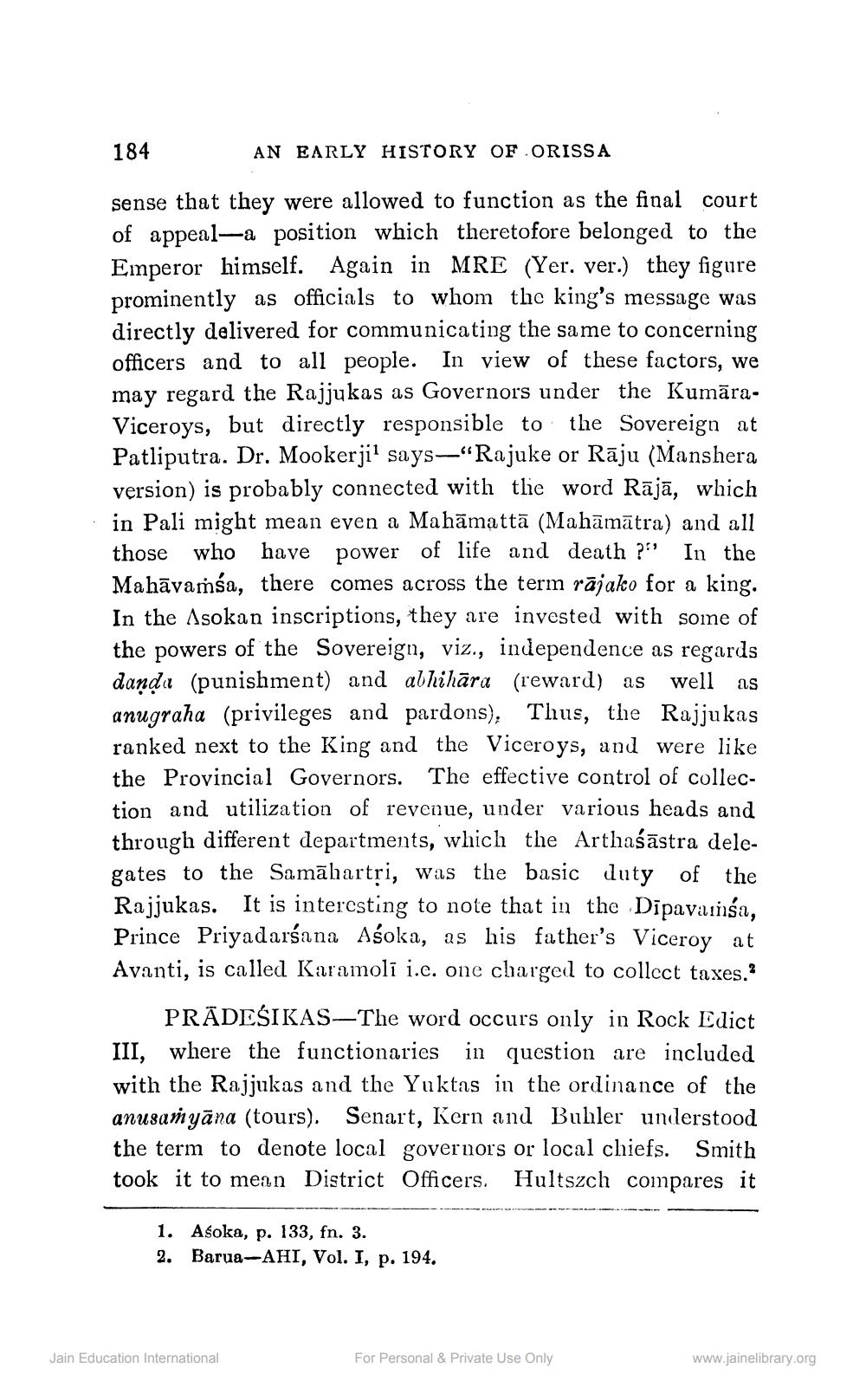________________
184
AN EARLY HISTORY OF ORISSA
sense that they were allowed to function as the final court of appeal—a position which theretofore belonged to the Emperor himself. Again in MRE (Yer. ver.) they figure prominently as officials to whom the king's message was directly delivered for communicating the same to concerning officers and to all people. In view of these factors, we may regard the Rajjukas as Governors under the KumāraViceroys, but directly responsible to the Sovereign at Patliputra. Dr. Mookerjil says-"Rajuke or Rāju (Manshera version) is probably connected with tlie word Rājā, which in Pali might mean even a Mahāmattā (Mahāmātra) and all those who have power of life and death ?'' In the Mahāvamśa, there comes across the term rājako for a king. In the Asokan inscriptions, they are invested with some of the powers of the Sovereign, viz., independence as regards danda (punishment) and abhihāra (reward) as well as anugraha (privileges and pardons). Thus, the Rajjukas ranked next to the King and the Viceroys, and were like the Provincial Governors. The effective control of collection and utilization of revenue, under various heads and through different departments, which the Arthaśāstra delegates to the Samāhartņi, was the basic duty of the Rajjukas. It is interesting to note that in the Dīpavainsa, Prince Priyadarśana Asoka, as his father's Viceroy at Avanti, is called Karamoli i.e. one charged to collect taxes.
PRĀDEŚIKAS—The word occurs only in Rock Edict III, where the functionaries in question are included with the Rajjukas and the Yuktas in the ordinance of the anusamyāna (tours). Senart, Kern and Buhler understood the term to denote local governors or local chiefs. Smith took it to mean District Officers. Hultszch compares it
1. Asoka, p. 133, fn. 3. 2. Barua-AHI, Vol. I, p. 194.
Jain Education International
For Personal & Private Use Only
www.jainelibrary.org




